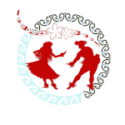Polynesian traditional attire varies across different island cultures within the region, each with its own unique styles, materials, and adornments. Here are some examples of traditional Polynesian clothing:
Lavalava or Pareo: This is a versatile garment worn by both men and women across Polynesia. It’s a large rectangular cloth, similar to a sarong, that is wrapped around the waist and can be worn as a skirt, dress, or even a head covering. Lavalavas are often made from colorful fabrics with intricate patterns.
Tapa Cloth: Tapa cloth, also known as siapo (Samoa), ngatu (Tonga), or kapa (Hawaii), is a traditional Polynesian fabric made from the bark of certain trees. It’s used to make clothing, ceremonial items, and decorations. Tapa cloth often features symbolic designs and motifs that hold cultural significance.
Grass Skirts: Grass skirts are iconic symbols of Polynesian culture, particularly in Hawaii and Tahiti. They are made from dried grass or leaves, typically worn around the waist in layers to create a full, flowing skirt. Grass skirts are commonly worn during traditional dances and festivals.
Tī Leaf Skirts: In Hawaii, tī leaf skirts are another traditional attire worn during cultural ceremonies and performances. Tī leaves are gathered, dried, and woven together to create skirts that are durable and have a distinctive, earthy aroma.
Ta’ovala: Ta’ovala is a Tongan garment worn around the waist, similar to a lavalava. It’s typically made from woven pandanus leaves or mats and is worn by both men and women during formal occasions and ceremonies.
Malo: Malo is a traditional Samoan garment worn by men. It’s a rectangular cloth that is wrapped around the waist and secured with a belt or sash. Malo can be made from various materials, including tapa cloth, woven mats, or fabric, and is often embellished with decorative elements.
Kiekie: Kiekie is a traditional Maori garment from New Zealand, primarily worn by women. It’s made from woven flax fibers and worn around the waist as a decorative skirt or belt. Kiekie often features intricate weaving patterns and may be adorned with feathers or shells.
These traditional wears not only serve practical purposes but also carry deep cultural meanings and are often worn during significant ceremonies, celebrations, and performances to showcase pride in Polynesian heritage and identity.
What are the traditional Polynesian ornaments?
Traditional Polynesian ornaments are an integral part of cultural expression and often hold deep symbolic significance. These ornaments vary across different Polynesian cultures, but they share common themes of natural materials, intricate craftsmanship, and cultural symbolism. Here are some examples:
Lei (Hawaii): Lei are perhaps the most iconic Polynesian ornaments, consisting of flower garlands, shells, leaves, or other materials. In Hawaii, lei are worn as adornments for special occasions, greetings, or ceremonies. They symbolize love, friendship, and hospitality.
Tahitian Hei (Tahiti): Tahitian hei are ornamental necklaces made from natural materials such as shells, seeds, pearls, and flowers. They come in various styles and designs, ranging from simple to elaborate, and are worn as decorative accessories for traditional Tahitian dance performances or special events.
Tapa Cloth Patterns (Samoa, Tonga, Fiji): Tapa cloth, made from the bark of certain trees, is adorned with intricate patterns and designs that hold cultural significance. These patterns may include geometric shapes, motifs inspired by nature, or symbolic representations of ancestral stories and traditions. Tapa cloth is used for clothing, decorations, and ceremonial purposes.
Maori Bone Carvings (New Zealand): In Maori culture, bone carvings, known as “taonga pūoro,” are highly valued ornaments made from bone, particularly whale bone (referred to as “pounamu”). These carvings often feature intricate designs inspired by Maori mythology, ancestral symbols (such as the koru or manaia), and spiritual beliefs. They are worn as pendants or incorporated into jewelry and accessories.
Kapa (Hawaii): Kapa is a traditional Hawaiian fabric made from pounded bark, decorated with natural dyes, and adorned with patterns and designs. Kapa is used to create clothing, accessories, and ceremonial items, and the designs often reflect cultural motifs, stories, or spiritual beliefs.
Featherwork (Various Polynesian Cultures): Featherwork is a traditional art form found in various Polynesian cultures, including Hawaii, Tahiti, and New Zealand. Feathers from birds such as the mōlī (albatross), ʻiʻiwi (Hawaiian honeycreeper), or kāhuli (land snail) are used to create intricate headdresses, cloaks, and ornaments. Featherwork is often reserved for high-ranking individuals or ceremonial occasions and represents prestige, power, and spirituality.
Shell Jewelry (Various Polynesian Cultures): Shell jewelry is a common ornament found across Polynesian cultures, crafted from shells such as cowrie, puka, or mother-of-pearl. These shells are used to create necklaces, bracelets, earrings, and other accessories, often embellished with intricate designs or combined with other materials like seeds or beads.
These traditional Polynesian ornaments not only serve as decorative accessories but also carry cultural significance, conveying stories, beliefs, and connections to the natural world and ancestral heritage.
